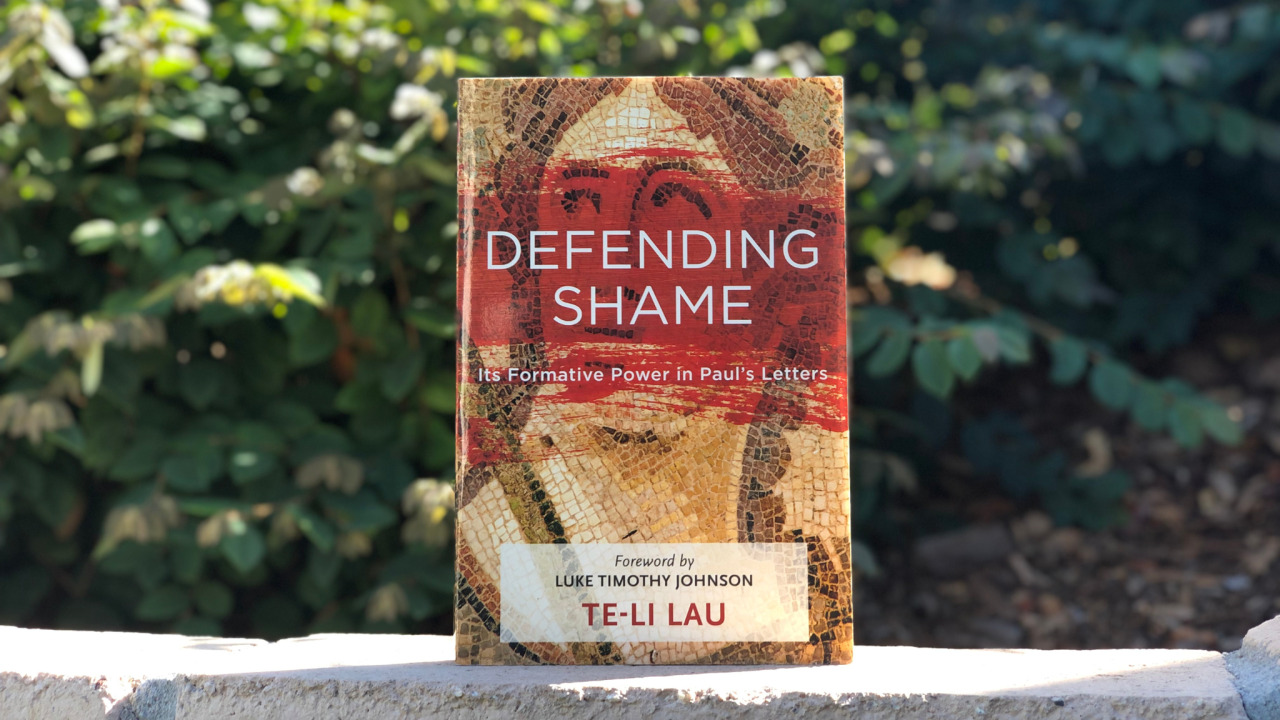What does Scripture have to say about shame? Can shame be used for our sanctification? In Defending Shame, Te-Li Lau discusses the formative power of shame in Paul’s letters.
Because shame is an emotion, Lau admits that shame may be a difficult concept to grasp. But after examining shame in relation to humiliation, embarrassment, and guilt, Lau lands on a definition: Shame is the painful emotion that arises from an awareness that one has fallen short of some standard, ideal, or goal.
Greco-Roman and Jewish Backgrounds
Lau looks at Greco-Roman and Jewish backgrounds in order to give us a framework before focusing on Paul’s letters. I was most interested by his analysis of Aristotle’s view on shame and how Greco-Roman culture found shame to be an integral part of communal living.
Shame was used to shape their society. Parents played a role in properly teaching virtue, with shame being a natural consequence to guide the young to make good and moral judgments.
Lau’s examination of the Jewish background reveals that shame has both subjective and objective senses. Shame can be experienced in that a person feels ashamed, while disgrace and humiliation is an objective reality. The ideas of honor and shame, when connected to God, functions as our conscience.
Again, we see that shame plays a role in moral formation, but it also pertains to the divine-human relationship. Covenantal faithfulness and obedience impact our feelings of shame and joy.
Retrospective Shame
Paul’s use of retrospective shame is studied in Galatians and 1 Corinthians. I was most surprised to see how cutting Paul’s use of shame is in the text. His account of shaming Peter (the chief of the apostles!) in Galatians 1:11-14 is incredible.
Presenting Peter as a hypocrite and coward and shaming him for it was a way of discipline. In the same way, the foolish Galatians lacked discernment and judgment for seeking justification through the law. Paul’s rebuke serves as a call to recommit to Christ and the truth of the Gospel.
I was most encouraged to see how Paul’s use of shame in 1 Corinthians is actually used to build-up the church. Lau demonstrates how Paul is like a father, guiding his spiritual children in the way they should go. With logical arguments and gentle words, he does not lose his audience. Paul gives his readers a new frame of reference so they can reevaluate their relationship to Christ. He uses shame as a teaching tool for spiritual formation.
Prospective Shame
Interestingly, Paul uses prospective shame in Philippians and Philemon. While Paul does not actively shame in Philippians, he employs an honor and shame discourse to persuade his readers. For Philemon, Paul writes about the potential of shame if Philemon were not to receive Onesimus back as a brother in Christ. I was amazed by Paul’s command of his readers, and his wise way with words.
Lau does a brilliant job of constructing Paul’s use of shame in these two books, and he finds that the value that truly defines honor and shame is the cross of Christ. The themes of sin, conscience, and repentance are anchored in the cross and buoyed by shame.
He comes to six strong conclusions:
- Shame, as a moral emotion, is vital to the Christian life.
- Shame, as an emotional response, provides a window to our moral character.
- Shame, as a moral emotion, has the potential to affect our belief structure.
- Shame, as a moral emotion, provides rhetorical amplification and deepens convictions.
- Shame, as the premier social emotion, supports the communal nature of Pauline ethics.
- Shame motivates, but gratitude is the ultimate emotional motivation for doing good.
Shame in Chinese Families
The book also engages current theories and cultures around shame. Lau discusses John Braithwaite’s reintegrative shaming theory (RST) and the Confucian understanding of shame in Chinese families.
Of particular interest to me as an Asian American Christian was to see that shame is a cardinal virtue in Chinese thought. Lau explains the trappings of the “Tiger Mom” and how Chinese parents use shame to teach their children right from wrong. While the Chinese use of shame has many similarities with Greco-Roman and Pauline uses, it adds the dimension of self-esteem and self-worth as tied to the values and perception of the community. Lau skillfully sheds light on such complex, social-emotional issues.
Of course, the feeling of shame is not enough to properly shape and form the heart of the Christian. Lau admits that we need the Holy Spirit’s help. In fact, the Spirit is essential. Ultimately, “the intended audience of Paul’s shaming rhetoric is the community of believers.”
Shame and the Forgiveness of God
Lau concludes by addressing contemporary challenges to employing a Pauline vision of shame:
- Guilt, not shame, is the preferred moral emotion
- The evocation of shame (or guilt) is manipulative, even coercive
- Shame is toxic and destructive.
Lau gives careful analysis with his answers, and ultimately ends by championing our salvation that comes not from feeling and forcing shame, but from the forgiveness of God.
At over 250 pages, this book is an academic work that demands your attention. Serious students of the Bible will benefit from learning from Lau as he exegetes and explains an important theme in Paul’s writings. Pastors and preachers will be better educated and prepared to speak with sensitivity to those that come from an honor-shame culture with compassion. And as shame is seen both in the church and the world, this book will give a Biblical basis for understanding and employing it with Gospel grace.
I received a media copy of Defending Shame, and this is my honest review.

